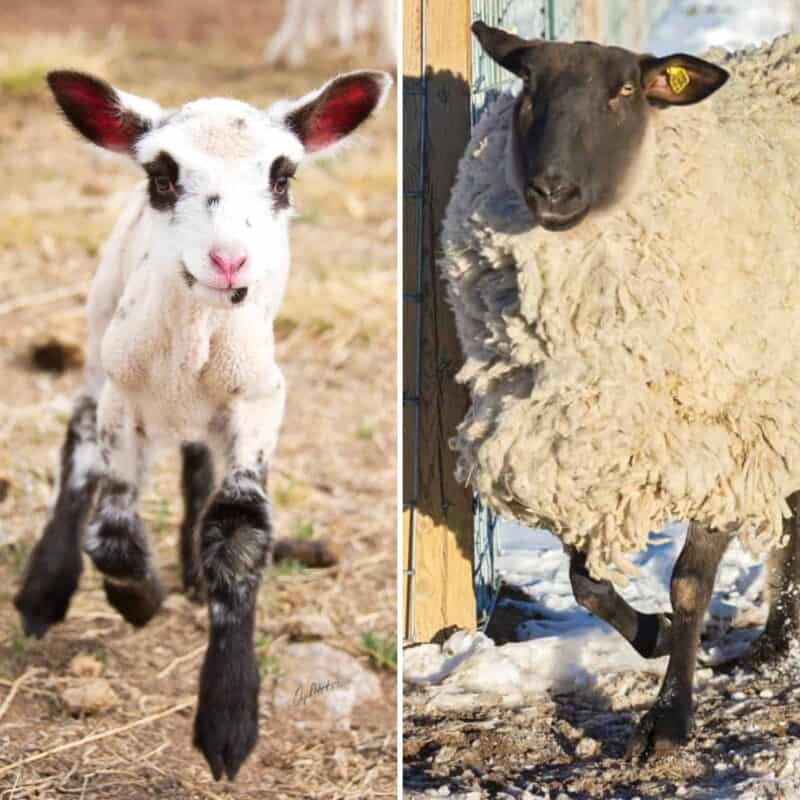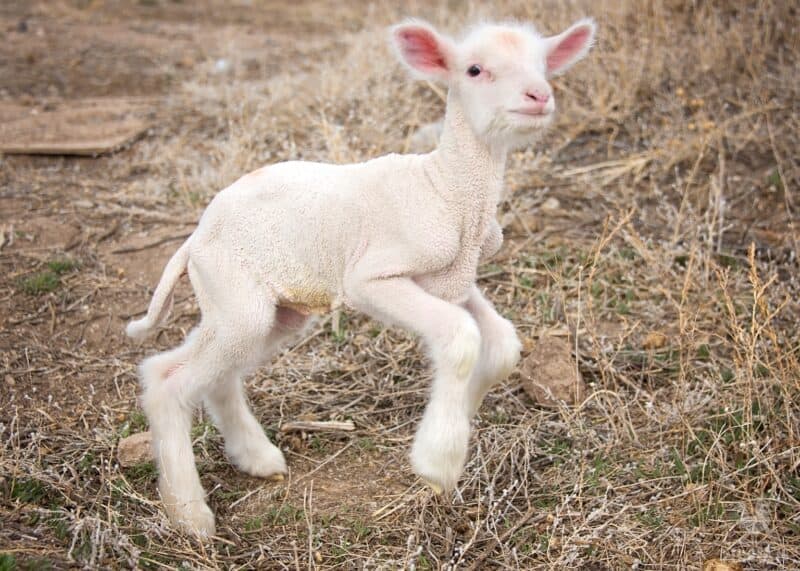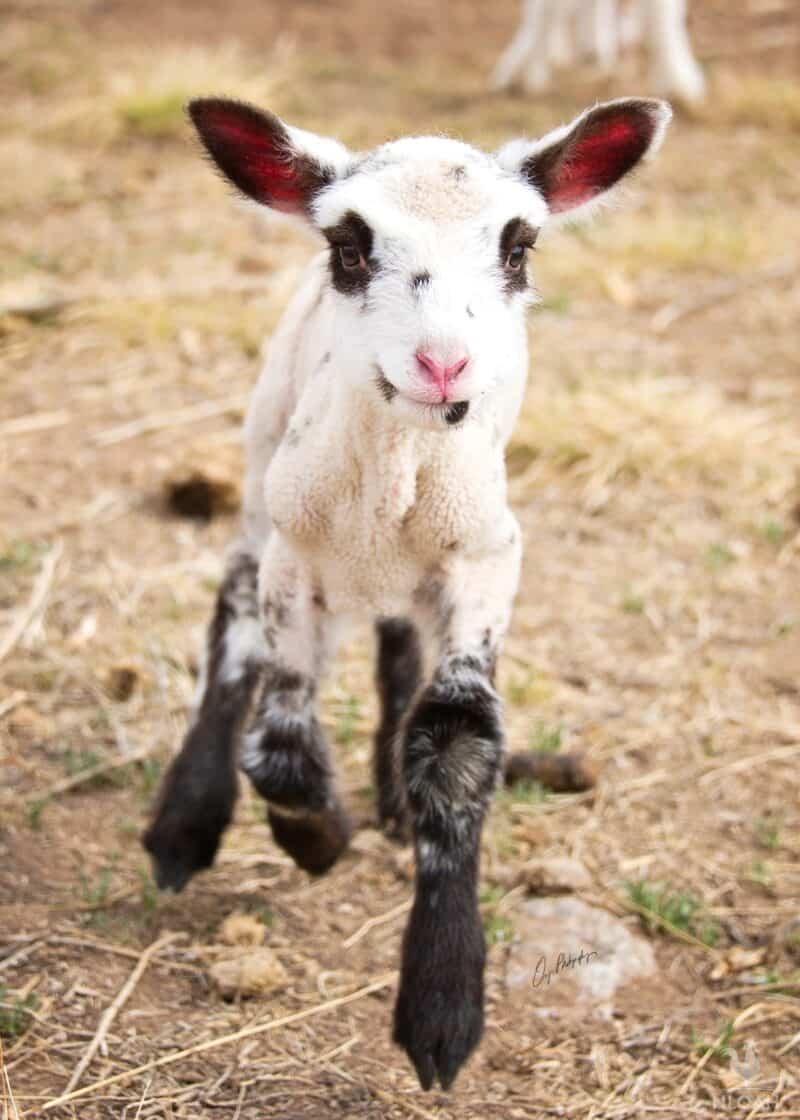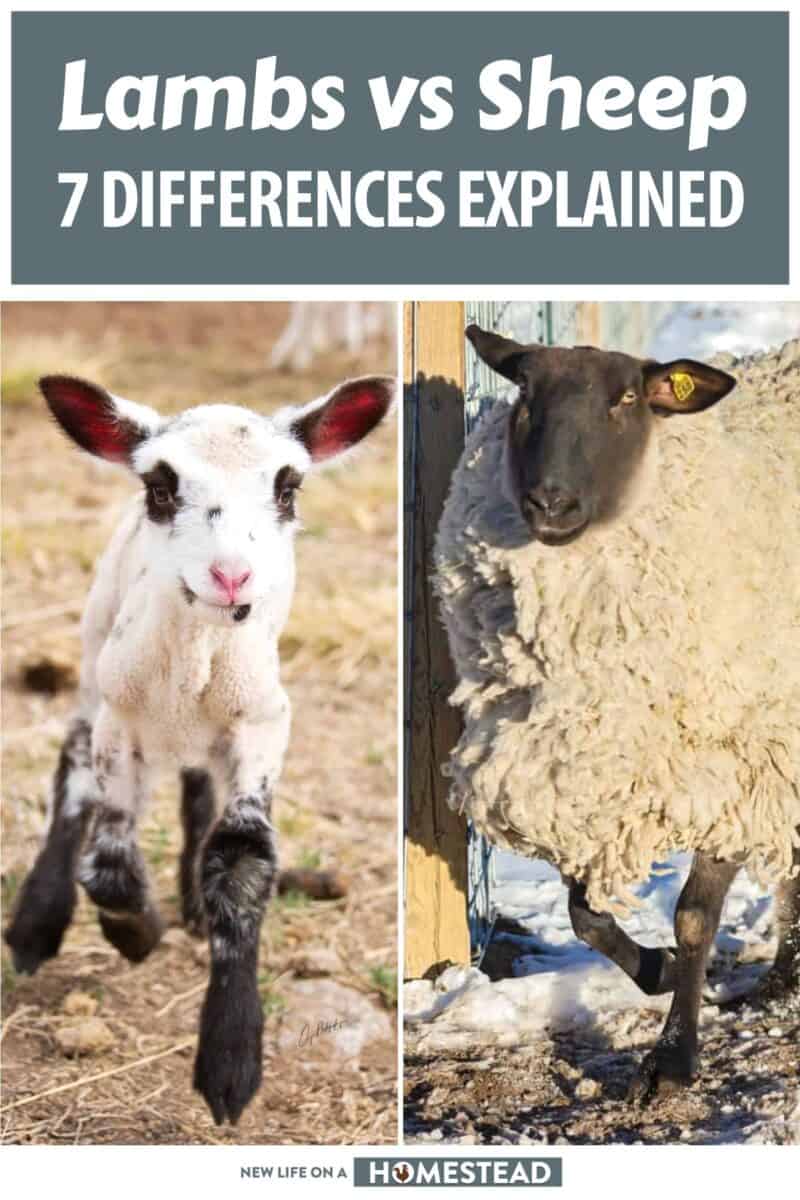[ad_1]
If you don’t know a lot about livestock in general, you might be wondering if there are any differences between sheep and lambs.

There are, and quite a few in fact! Most people do know that lambs are baby sheep, but lambs actually have several physical differences that can distinguish them from their parents and from older, mature sheep.
I’ll tell you about seven of those differences in this article…
1. Lambs are Just… Baby Sheep
The first thing to know about lambs is that they are, indeed, just baby or adolescent sheep. A lamb is technically a sheep that’s younger than 1 year old.
Although most of us think of a lamb as a perfect, tiny newborn sheep, strictly speaking, they remain lambs into adolescence and young adulthood, or into their “teenage years” you might say – if we’re talking about sheep years!
This is also important to know because referring to a sheep as a lamb might not tell you a lot about its age and overall disposition.

If you’re shopping for lambs expecting to get a tiny 10 to 15 pound (4 to 7 kgs) baby and instead show up to look at mature yearling lambs, you’ll have wasted a lot of time and effort on simple miscommunication!
Also, referring to meat products derived from sheep, lamb must specify meat prepared at or before a certain age in some countries, whereas in other countries all meat from sheep is described as lamb, like in the United States. We’ll talk a little bit more about that later…
2. Lambs are Much Smaller than Sheep
As is the rule with all baby animals, lambs are much smaller than their parents, with your average lamb weighing anywhere from eight to 15 pounds (6.8 kilograms) depending on the breed.
This is in stark contrast to adult sheep, which can tip the scales at more than 200 pounds (90 kilograms) for mature males depending on the breed.
Lambs are also, obviously, much shorter than adult sheep, and a lamb might only be 10 or 12 inches (25 – 30 centimeters) tall at birth.
They grow quickly, however, and can be almost as tall as their parents within a few months, and are generally fully grown by around 6 months old.
Knowing that, it seems a little peculiar that lambs are still considered lambs even at 11 months of age, since they are truly “grown” much earlier than that!
3. Lambs Only Drink Milk
Sheep are strict herbivores, meaning they only eat plants, but lambs consume nothing but milk for the first few weeks of their lives.
Lambs are born without the ability to digest grass or other similar plant matter, so in order for them to survive during their first months of life, they have to drink milk from their mothers…
This also means that lambs need to stay close to their mothers at all times, as wandering off too far will put them in danger of becoming separated from the herd and unable to find edible food.
This also puts a lot of pressure on mother sheep, or ewes, since they might not have the resources to handle more than one hungry lamb at a time!
Every now and then, lambs might even be rejected by their moms, and that will necessitate that their human owners feed them by hand with a bottle. These lambs are usually called bottle babies for that reason.
4. Lambs Don’t Have Teeth for Chewing
Another interesting difference that lambs have from grown sheep is that they don’t have normal, adult teeth just yet.
The tiny, smooth teeth lambs have are referred to as milk teeth, and they are only good for sucking on their mother’s teats and not much else.
This also prevents them from being able to chew or bite grass, which is why again, lambs need to drink milk for a few weeks before they can start trying other food.
They quite literally won’t be able to until the lamb’s mature teeth start to come in!
A lamb’s mature teeth usually start to come in when the lamb is between 4 and 6 weeks old. At this point, they will typically have both the milk teeth they were born with and some of the adult or permanent teeth that will continue to come in over a period of several months.
This is another reason why newborn lambs are dependent on bottle feeding if they cannot get enough milk from the ewe for whatever reason: they cannot even chew other foods!

5. Lambs Don’t Have Horns
Sheep are interesting animals because, in some breeds, both males (rams) and females (ewes) have horns, though it’s the males that typically have the largest and most impressive ones.
But, despite males and females alike having horns, lambs never have any when they are newborns. In fact, it can take weeks before the first indications of horns even start to show up!
This is because, while lambs are born with the necessary genetic material to develop horns later on in life, they won’t show until the hormones that cause horn growth are released.
This typically happens when a lamb reaches around a month of age, and the horn buds grow in the following weeks until they’re visible, usually only being prominent at a year of age.
In some rare cases, lambs won’t even start growing horns until they reach a year old.
Mature sheep will grow horns continuously throughout their lives until they reach a ripe old age, at which point horn growth slows down, like many other processes in the body, and eventually halts.
6. Lambs Have Finer, Softer Wool
One of the most immediately noticeable differences between lambs and sheep is the fact that lambs have wool that’s much softer, finer and more delicate.
As a sheep ages, its wool becomes coarse, wiry, and of lesser overall quality and appeal compared to lambswool, though it’s still quite useful…
Lambswool also has different properties from other types of sheep’s wool. For example, it is easier to dye and more absorbent, as well as being much less prone to shedding and fraying.
This makes it perfect for clothing, home furnishings, sweaters, hats and other items that are meant to be extra comfortable or luxurious.
And lambs can also start producing harvestable wool very early in life; they are born with a thin coat of wool already and it gets thicker quickly as they grow.
However, as you might imagine the relative scarcity of lambswool and the short window of time that the lamb growing it retains its qualities means that the cost of lambswool is much higher than that of other types of wool.
7. Lambs Produce Meat that is Superior to Sheep
The other product lambs produce also sets them apart from their older kin: their meat. Although people in America typically refer to all “sheep meat” as lamb, this is not technically accurate.
Real lamb comes from, yep, lambs while meat from a mature sheep is properly called mutton.
As with meat taken from other animals, lamb meat has different qualities from mutton. It is generally more tender and flavorful, with a delicate taste that pairs well with most seasonings and sauces.
Mutton, on the other hand, tends to be much tougher than lamb and has a stronger flavor that some people can find overpowering, though proper preparation can make all the difference in this regard.
Lambs Have Many Attributes that Set Them Apart from Sheep
Lambs are an incredibly important part of sheep farming. They have unique physical characteristics such as softer wool and the lack of horns that sets them apart from their adult counterparts.
In addition to this, they also produce superior type of meat that is more tender and flavorful than mutton produced by mature sheep.
As you can see, there’s much more to these young animals than meets the eye…

[ad_2]
Source link
Get more stuff like this
in your inbox
Don't Be Left Unprepared
Thank you for subscribing.
Something went wrong.


